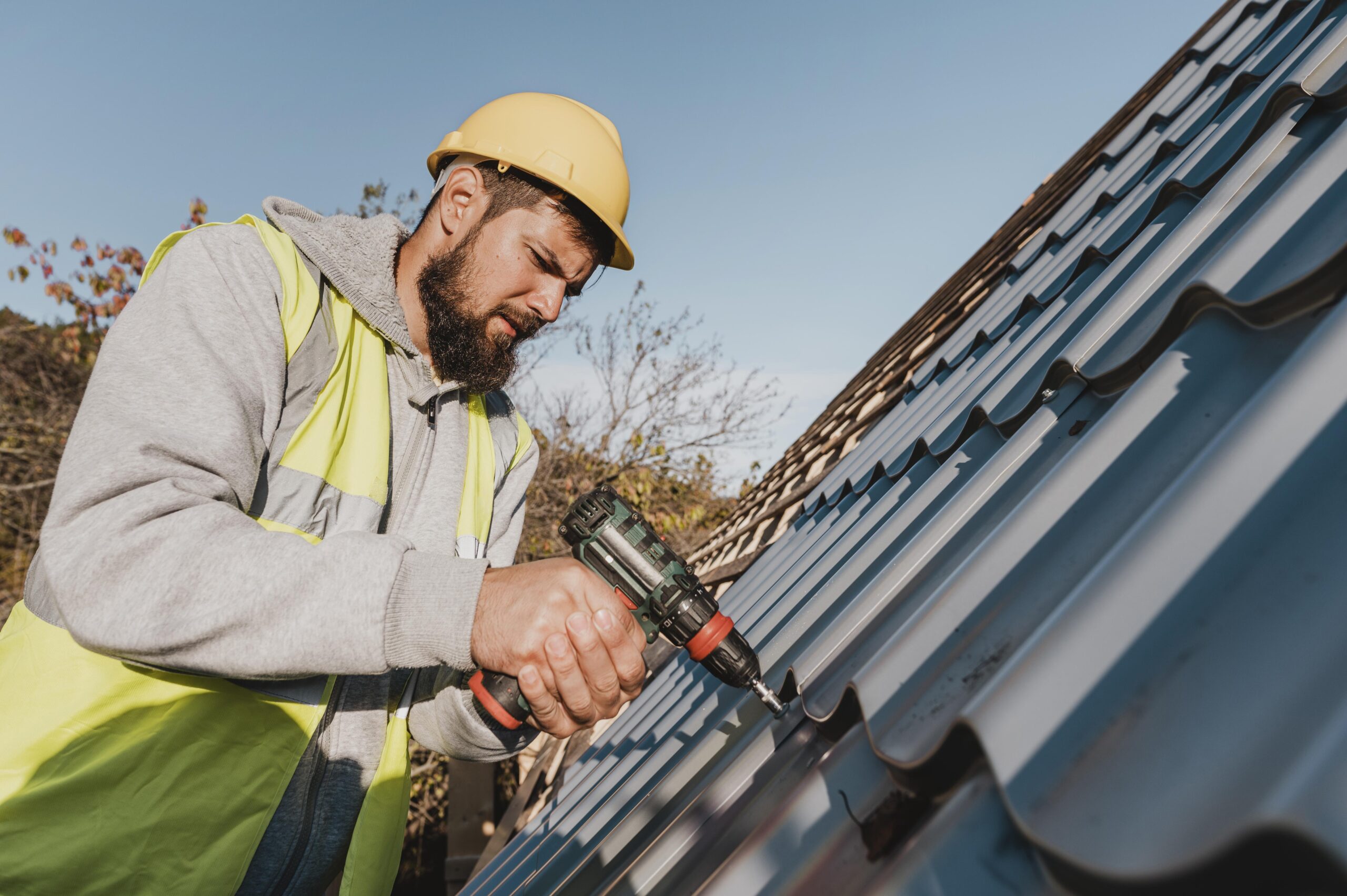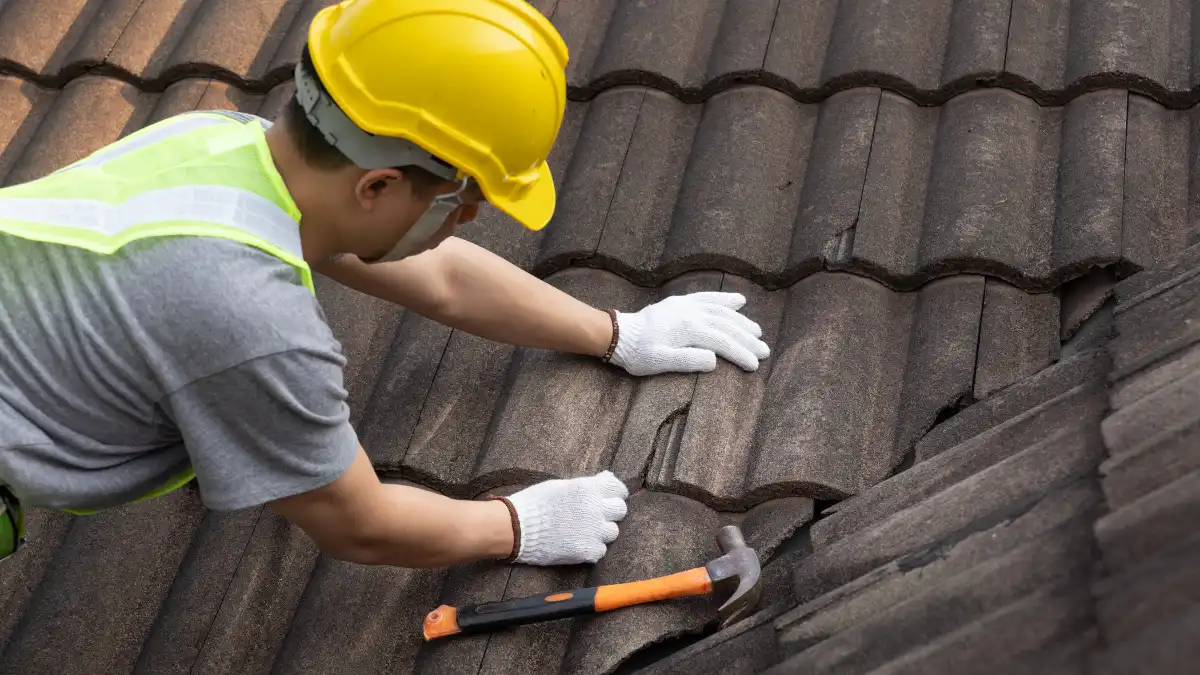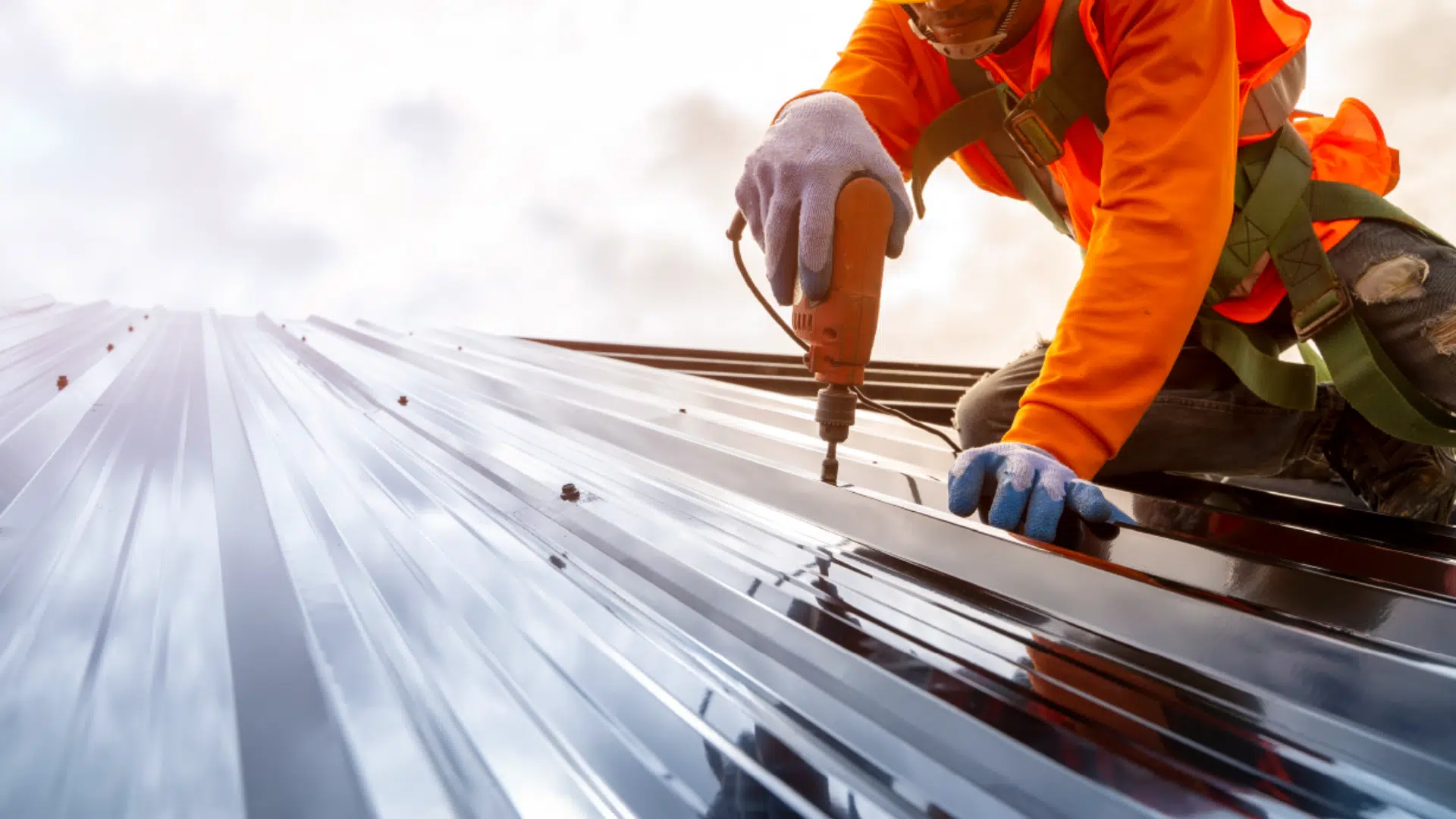Roof Repair How Long It Takes: Step by Step
Signs You Need Roofing Repair: Safeguard Your Investment With These Easy Checks
Understanding the indicators that show a requirement for roof fixing is essential for securing your building and investment. Typical indicators such as missing out on shingles, unforeseen water spots, and granules gathering in rain gutters can suggest underlying issues that, if left unaddressed, may escalate right into more severe issues. Furthermore, signs like sagging areas or boosted energy costs can likewise indicate ineffectiveness or damage. To ensure your roofing system remains in leading problem and to prevent expensive fixings, it is important to identify these very early indication and act as necessary. What steps should you take following?
Missing Out On or Damaged Roof Shingles
When evaluating the problem of your roof, among one of the most telling indications of prospective issues is the existence of missing out on or damaged tiles. Roofing shingles act as the first line of protection against the elements, and their stability is vital for preserving the general health of your roof - I&E Roofing & Construction, Inc.. A few missing tiles may appear small, yet they can result in substantial water infiltration, compromising the underlying structure and demanding much more comprehensive fixings
Harmed shingles can materialize in various methods, including curling, breaking, or blistering. Each of these problems can reduce the effectiveness of your roof, enabling moisture to permeate and lead to extra serious troubles. Roof Repair. It is vital to conduct routine examinations, especially after serious climate events, as high winds and heavy rain can aggravate roof shingles damage
If you identify missing or damaged roof shingles, it is advisable to deal with these problems immediately. While minor repair services might be workable for a home owner, comprehensive damage usually calls for expert treatment. Prompt action can prevent additional problems and protect your investment, ensuring the durability and efficiency of your roofing.
Water Discolorations on Ceilings
Water discolorations on ceilings are frequently clear signs of underlying water damage that needs instant focus. Identifying the source of these stains is crucial, as they can result from numerous concerns, including roofing leakages or plumbing troubles. Dealing with the origin not only protects against further damages yet likewise protects the honesty of the home.
Determining Water Damage

When examining for water stains, pay focus to both the shapes and size of the discoloration. Uneven shapes might recommend recurring leaks, while a lot more defined areas could indicate previous problems. In addition, think about the area of the spots; spots near plumbing components or outside wall surfaces may provide clues about prospective sources of the water intrusion.
It is also essential to take a look at the texture of the ceiling bordering the stains. Peeling paint or gurgling drywall can indicate considerable dampness direct exposure, necessitating immediate focus. Routine evaluations and prompt activity can aid stop a lot more severe water damages, securing both the architectural stability of the home and the investment it stands for. Constantly speak with a professional for a comprehensive assessment if you uncover water spots on your ceilings.
Root causes of Spots
What elements contribute to the look of stains on ceilings? Water discolorations, commonly showing up as discolored patches, are primarily brought on by leaks in the roof covering or pipes systems - Roof Repair Company. When wetness penetrates with roof products or jeopardized plumbing, it can build up and lead to visible discoloration on ceilings
One typical reason is damaged or missing tiles, which can permit rain to seep right into the attic and, at some point, to the ceilings listed below. Additionally, improper blinking around chimneys, vents, or skylights can be a substantial resource of water intrusion. Pipes leaks, whether from defective pipelines or overflowing fixtures, can likewise develop stains, especially in areas straight listed below washrooms or cooking areas.

Recognizing the resource of the stain is vital for reliable fixing. Disregarding these signs can bring about more comprehensive damages, consisting of mold and mildew development and architectural weakening, underscoring the value of timely treatment to secure your financial investment.
Granules in Seamless gutters
Throughout routine inspections of your rain gutters, the existence of granules can be a considerable sign of roofing system degeneration. These small, sand-like bits are usually located externally of asphalt shingles, functioning as a protective layer against UV rays and weathering. In time, wear and tear can cause these granules to displace, resulting in a variety of problems that might jeopardize the stability of your roof covering.
If you observe a build-up of granules in your seamless gutters, it is important to take this indicator seriously. The loss of granules might expose the underlying asphalt to the aspects, increasing the threat of leakages and water damage. This situation not only threatens your roofing's lifespan however can additionally bring about pricey repair services if not resolved promptly.
To reduce possible damage, it is suggested to inspect your roofing system consistently, especially after serious weather events. Additionally, engaging a specialist roof specialist to analyze the problem of your tiles can give useful understandings. Early treatment is key to protecting your financial investment and ensuring the durability of your roof system. Keep in mind, granules in rain gutters are not an unimportant concern; they signal the need for prompt interest and possible repair.

Drooping Roof Covering Locations
Sagging roof locations can indicate serious architectural issues that call for immediate focus (Roof Repair). Noticeable defects on the roofing system's surface, integrated with the presence of water discolorations inside the home, are critical indication that ought to not be overlooked. Dealing with these troubles immediately can protect against more damages and costly fixings
Visible Roof Covering Deformities
Just how can property owners recognize potential concerns with their roofing systems? Among the most telling indications is noticeable roofing system defects, especially sagging locations. A sagging roof covering may appear as dips or contours, showing underlying architectural issues that can jeopardize the stability of the whole roof system. House owners ought to perform regular inspections, searching for any obvious irregularities in the roofline.
Numerous aspects can add to visible deformities, consisting of water damages, incorrect installment, or the weight of built up snow and particles. If a roof shows up to sag, it may signify weakened rafters or trusses, which can bring about much more severe problems if left unaddressed. A drooping roofing system not just jeopardizes the architectural security of the home but can additionally result in expensive repair costs if the trouble escalates.
If sagging or other visible deformities are observed, it is recommended to consult a professional professional roofer. They can analyze the situation, establish the cause of the sagging, and suggest ideal repair solutions. Timely intervention is vital to secure your investment and assure the long life of your roofing system.

Water Stains Inside Home
The existence of water discolorations inside the home usually signals possible concerns with the roofing, especially in locations where sagging has been observed. These discolorations usually show that water is penetrating with the roofing material, which can bring about significant structural damages if left unaddressed. Sagging roofing locations may be created by a selection of variables, including insufficient assistance, gathered wetness, or the degeneration of roofing materials.
When you observe water discolorations, it is essential to explore the resource of the moisture. Try to find indications of drooping in the roofing system framework, as this can intensify the trouble. Often, sagging areas can catch water, leading to leakages and further damages. In addition, it is important to assess the age of the roofing system; older roofing systems are a lot more prone to damage, enhancing the probability of leakages.
Trigger action is required to mitigate damages. Speak with a qualified roof specialist to evaluate the situation and suggest ideal repair check this services. Ignoring water stains and sagging can cause pricey repair services and jeopardize the stability of your home. Secure your investment by resolving these indicators prior to they intensify into more extreme issues.
Enhanced Power Bills
An unforeseen spike in power expenses can commonly signal underlying issues with your roof. When your roof is endangered, it can result in significant air leaks, enabling conditioned air to leave and unconditioned air to penetrate your home. This ineffectiveness pressures your heating and cooling systems to work harder, causing boosted power intake and higher utility prices.
One usual wrongdoer is harmed or missing out on tiles, which can expose your home's inside to the aspects. In addition, inadequate insulation as a result of roofing system damages can add to energy loss. If you observe a constant rise in your power bills without an equivalent change in use habits, it is crucial to examine possible roof-related problems.
Routine roofing system evaluations are necessary for determining issues prior to they escalate into costly repairs. Look for visible signs of wear, such as drooping locations, fractures, or gaps. These might indicate that your roof covering is no more providing the needed obstacle versus the elements. Resolving these problems quickly can help recover your home's power effectiveness and secure your financial investment over time. If you presume a problem, consult a roof expert for an extensive examination.
Mold or Mildew Growth
Mold or mildew development on your ceiling or wall surfaces can be a clear indicator of roof-related issues, particularly when dampness infiltrates your home. These fungis thrive in moist environments and can position significant wellness threats, consisting of respiratory problems and allergies. Their existence often suggests that your roofing system might be endangered, enabling water to permeate in via leaks or gaps.
To assess the situation, look for dark spots or discoloration on surface areas, typically in locations close to the roofline or where water might gather (I&E Roofing & Construction, Inc.). Additionally, look for any kind of water spots, peeling off paint, or soft areas in your ceiling or wall surfaces, which may indicate recurring moisture problems
If you notice mold or mildew, it is important to act rapidly. Not just can continued wetness damages your home's structural stability, but it can likewise lead to costly repairs down the line. Involving a professional professional roofer can aid recognize the resource of the issue, whether it's harmed tiles, improper ventilation, or other issues. Normal inspections and upkeep can assist avoid mold development and shield your financial investment, making sure a secure and healthy and balanced living atmosphere.
Age of the Roofing system
Evaluating the age of your roof covering is important in identifying its overall problem and prospective need for fixings. Most roof covering products have a certain lifespan, generally varying from 15 to thirty years, depending on the kind of material made use of. Asphalt tiles, as an example, usually last concerning two decades, while metal roof coverings can endure for 40 years or even more. As roofing systems age, they become a lot more susceptible to damage from weather, pests, and other environmental variables.
Normal assessments are essential for roof coverings older than 15 years. Indicators of wear, such as broken or curling shingles, missing floor tiles, or rust on metal surfaces, suggest that your roof covering might need immediate interest. In addition, inner signs like water stains on ceilings or wall surfaces can signal underlying concerns linked to an aging roofing.
If your roofing system is approaching its anticipated lifespan, consider seeking advice from a professional roofing professional for a detailed assessment. They can offer insights on repair service alternatives or suggest a replacement if necessary. Positive management of an aging roofing can avoid pricey damages to your home and guarantee that your investment stays protected.
Frequently Asked Concerns
Exactly how Typically Should I Check My Roofing System for Damage?
Normal roof evaluations are necessary for keeping the honesty of your home. It is suggested to evaluate your roof covering at the very least two times a year, preferably in the spring and autumn, to recognize any kind of prospective problems at an early stage. Furthermore, after serious weather condition occasions, such as hefty storms or hailstorm, a comprehensive examination is suggested. Dealing with minor damage immediately can prevent pricey fixings and expand the life-span of your roof covering system substantially.
Can I Repair My Roof Myself?
While it is feasible to fix your roof covering on your own, it is crucial to examine your skills and the intricacy of the damage. Minor issues, such as replacing a couple of shingles, might be manageable for a do it yourself lover. Significant fixings or architectural problems usually call for specialist experience to assure safety and security and conformity with building codes. Always prioritize your safety and take into consideration consulting a roof covering professional for considerable damage or if you doubt about the repair services.
What Are the Usual Reasons For Roofing Leaks?
Common causes of roof leakages include damaged tiles, which can take place due to age or extreme climate, and improperly sealed vents or flashing that may permit water infiltration. In addition, blocked gutters can cause water backup, causing leakages. Structural problems, such as drooping roofings or jeopardized underlayment, likewise add to this issue. Normal evaluations and upkeep are necessary to recognize these vulnerabilities and protect against expensive damages to your property.
Exactly How Can I Pick a Trusted Roofing Contractor?
Choosing a reputable professional roofer includes comprehensive study and assessment. Begin by seeking referrals from trusted sources and checking on-line testimonials. Confirm the specialist's licensing, insurance policy, and experience in roofing jobs comparable to your own. Request detailed estimates and contrast them for openness. In addition, inquire about guarantees and post-installation support. A reliable professional should connect clearly and show professionalism and reliability throughout the procedure, ensuring your financial investment is well secured.
What Is the Average Lifespan of Different Roof Covering Materials?
The ordinary life expectancy of roofing materials varies substantially. Asphalt tiles usually last 15 to 30 years, while steel roof coverings can withstand 40 to 70 years. Timber trembles usually have a life-span of 20 to 40 years, whereas clay or concrete tiles can surpass half a century with appropriate upkeep. Lastly, synthetic roofing products may use sturdiness comparable to typical choices, frequently long-term 30 to 50 years. Understanding these life expectancies help in preparing for maintenance and substitute.